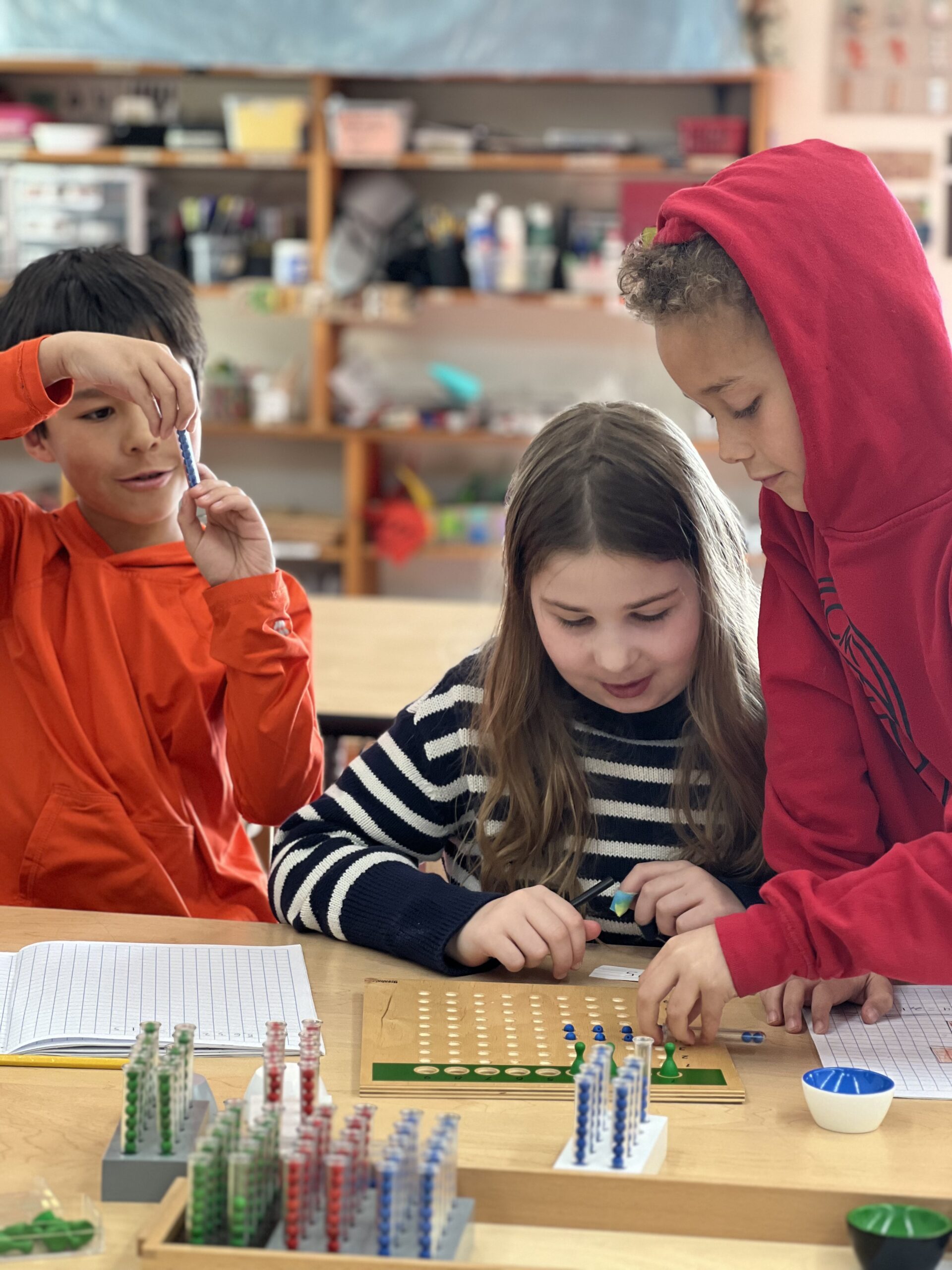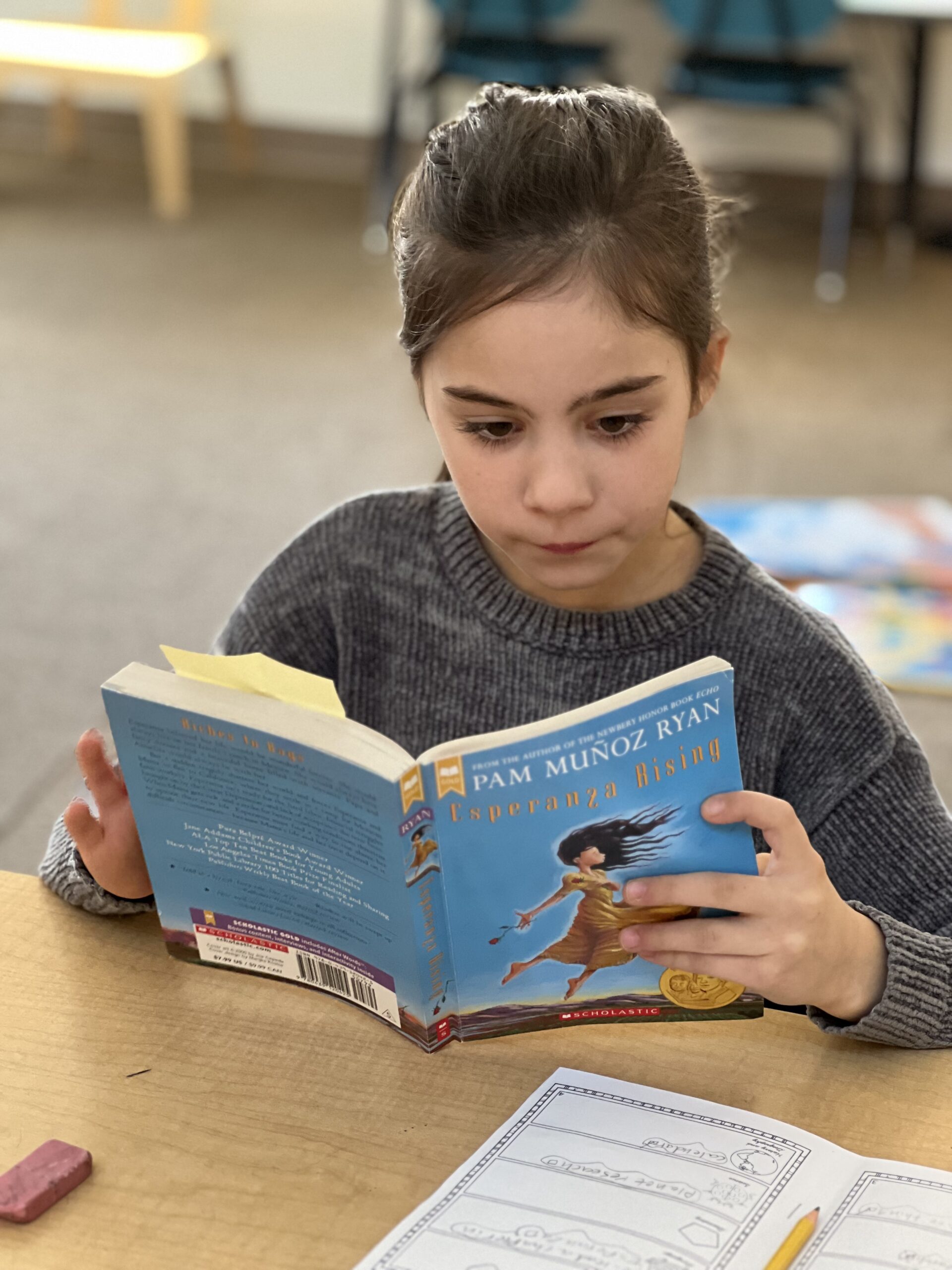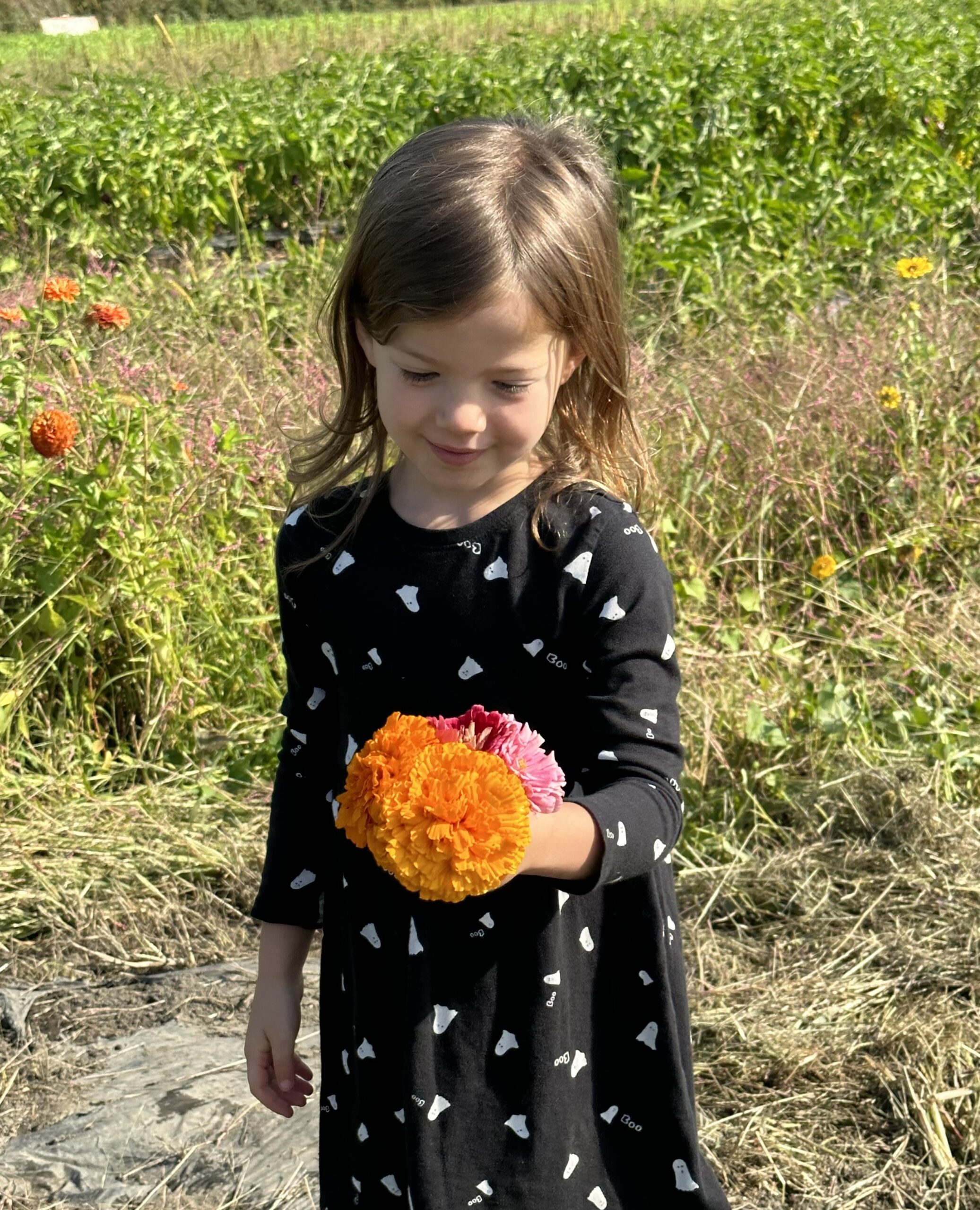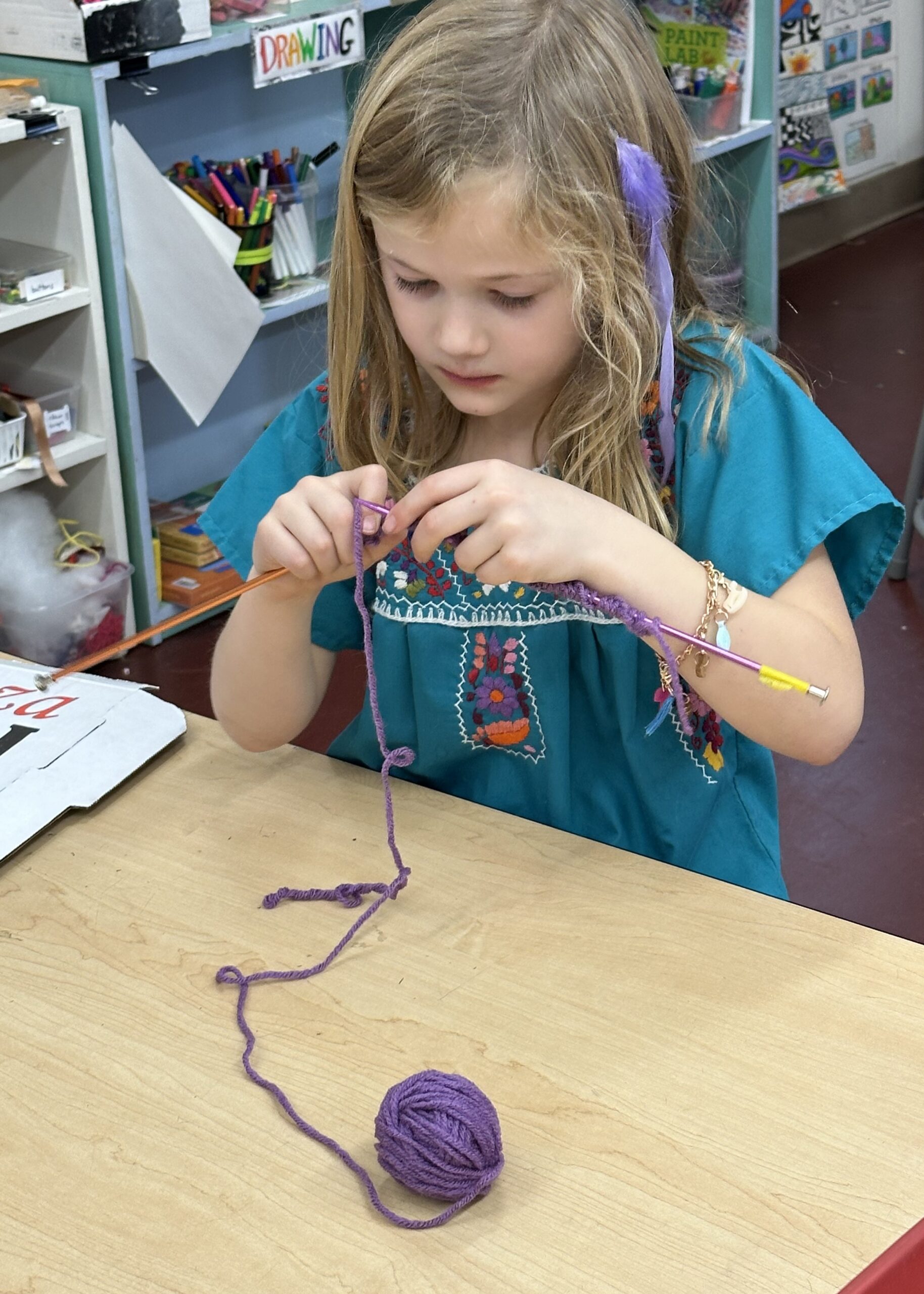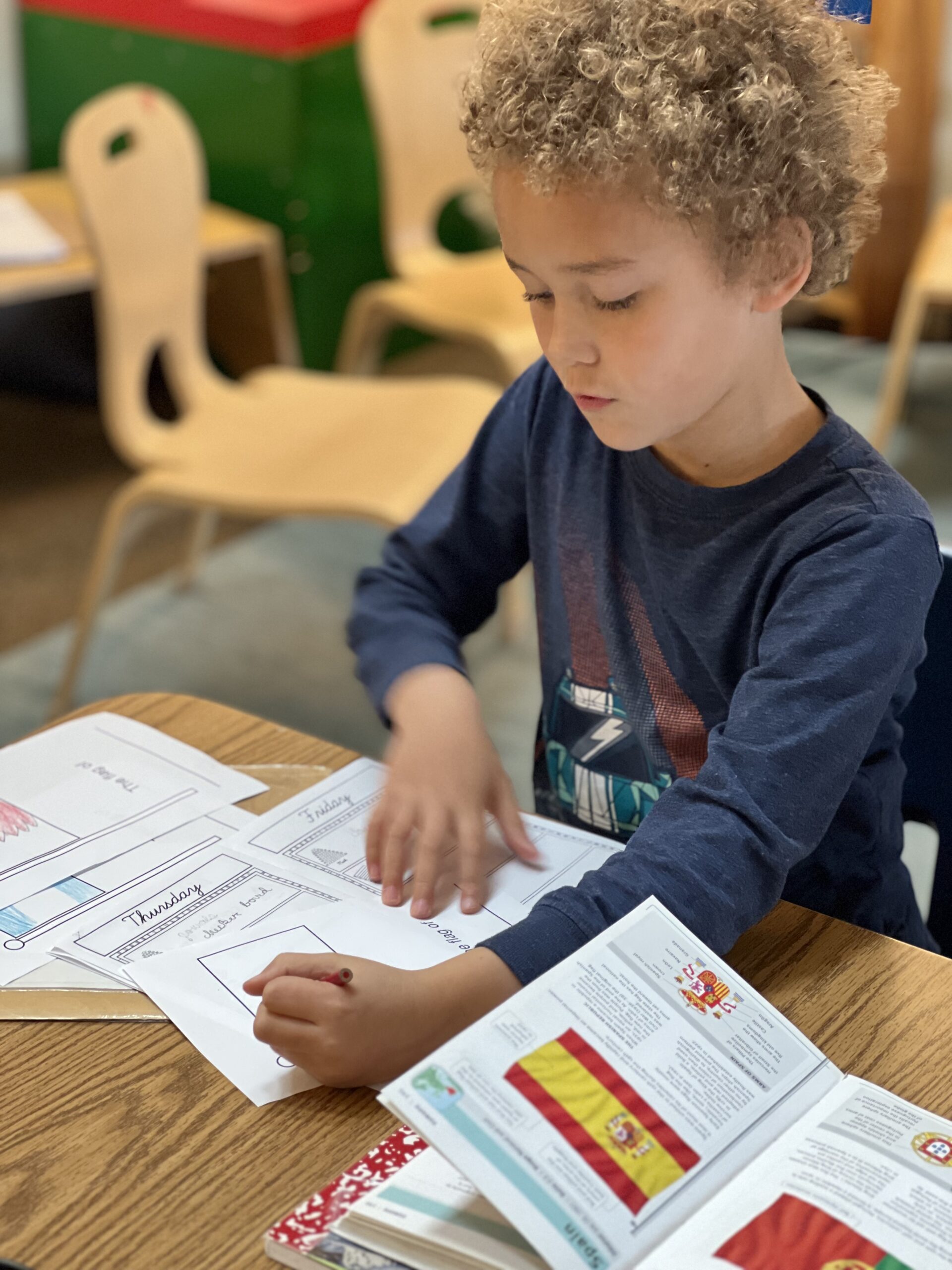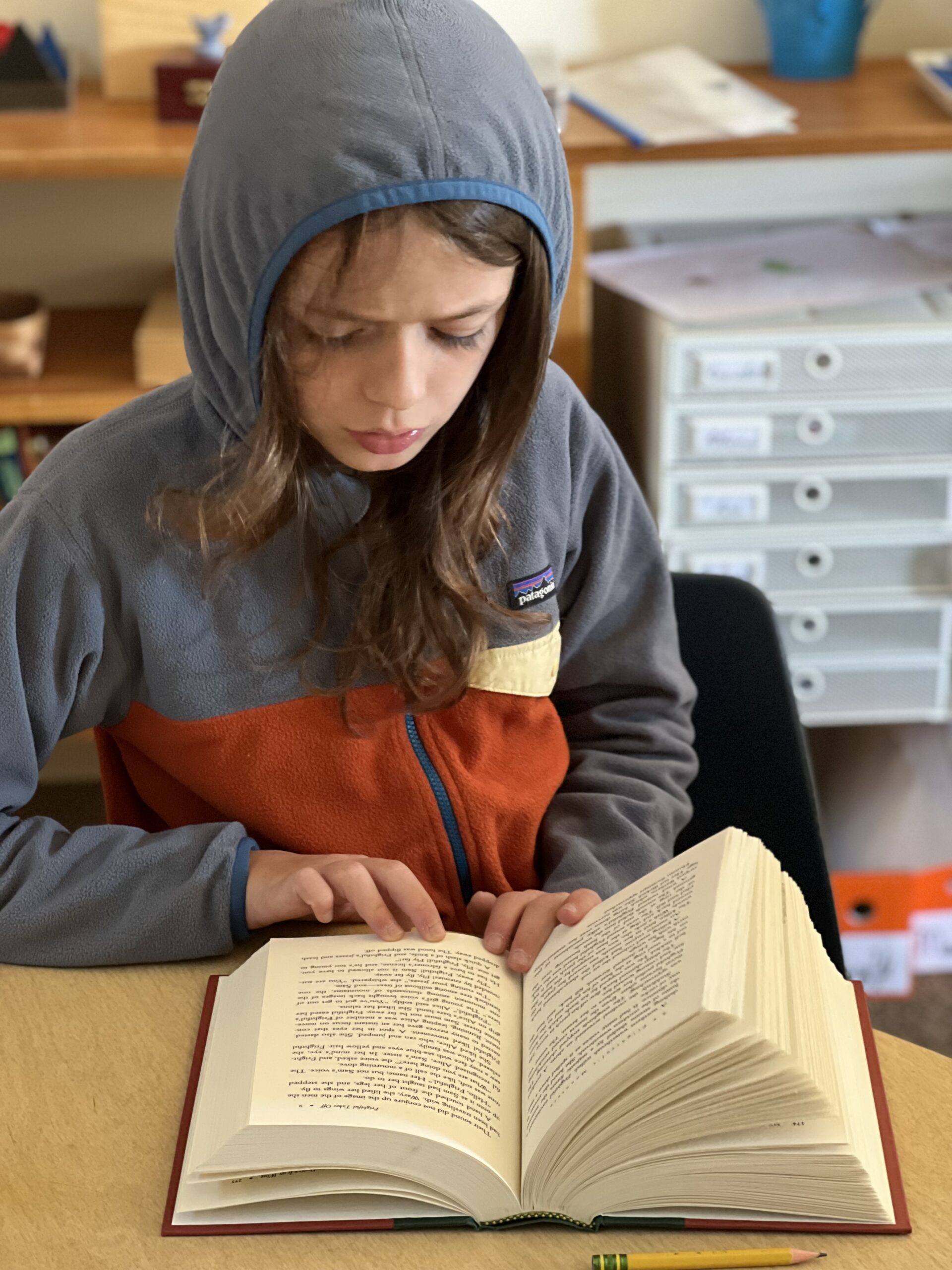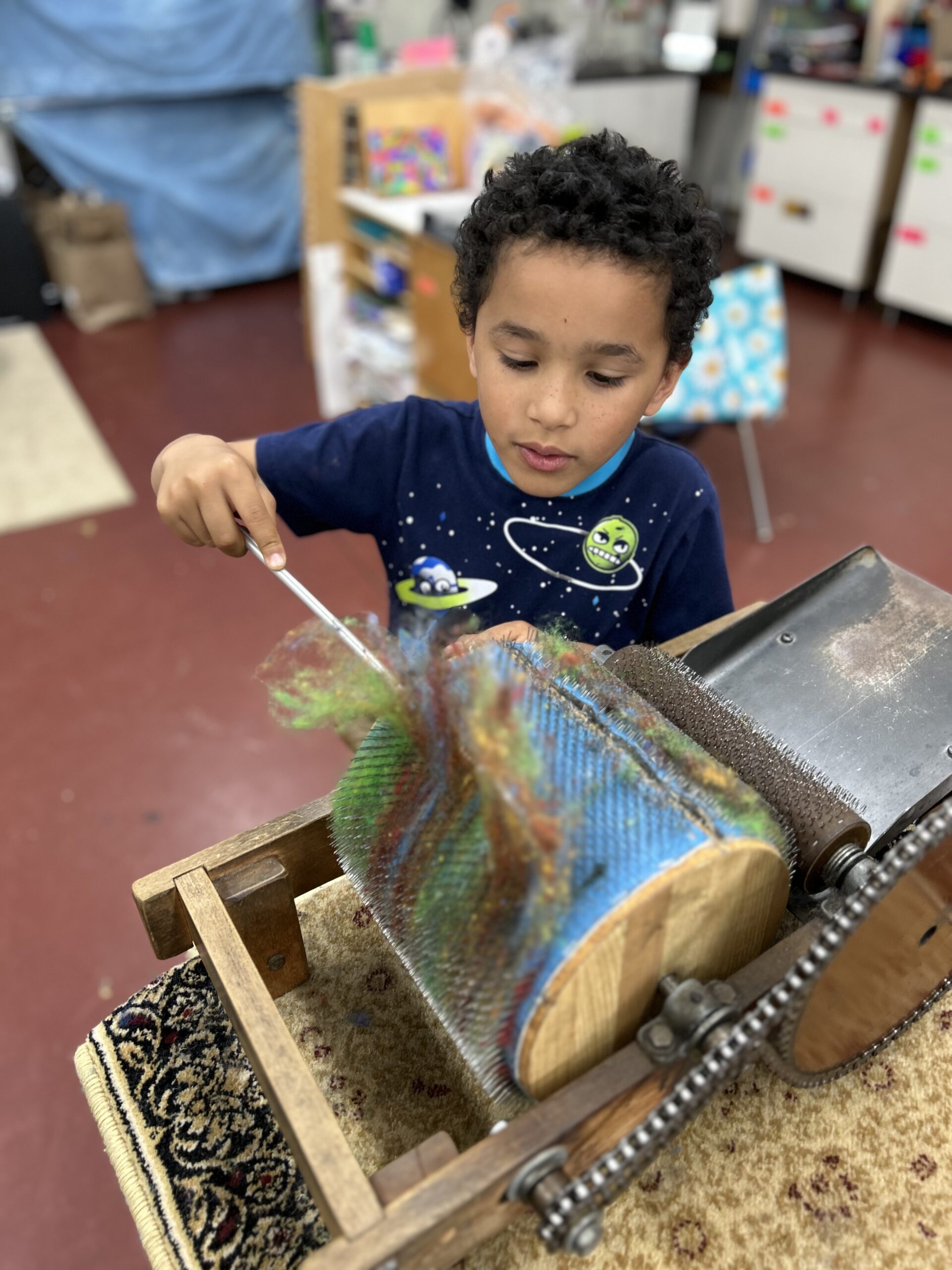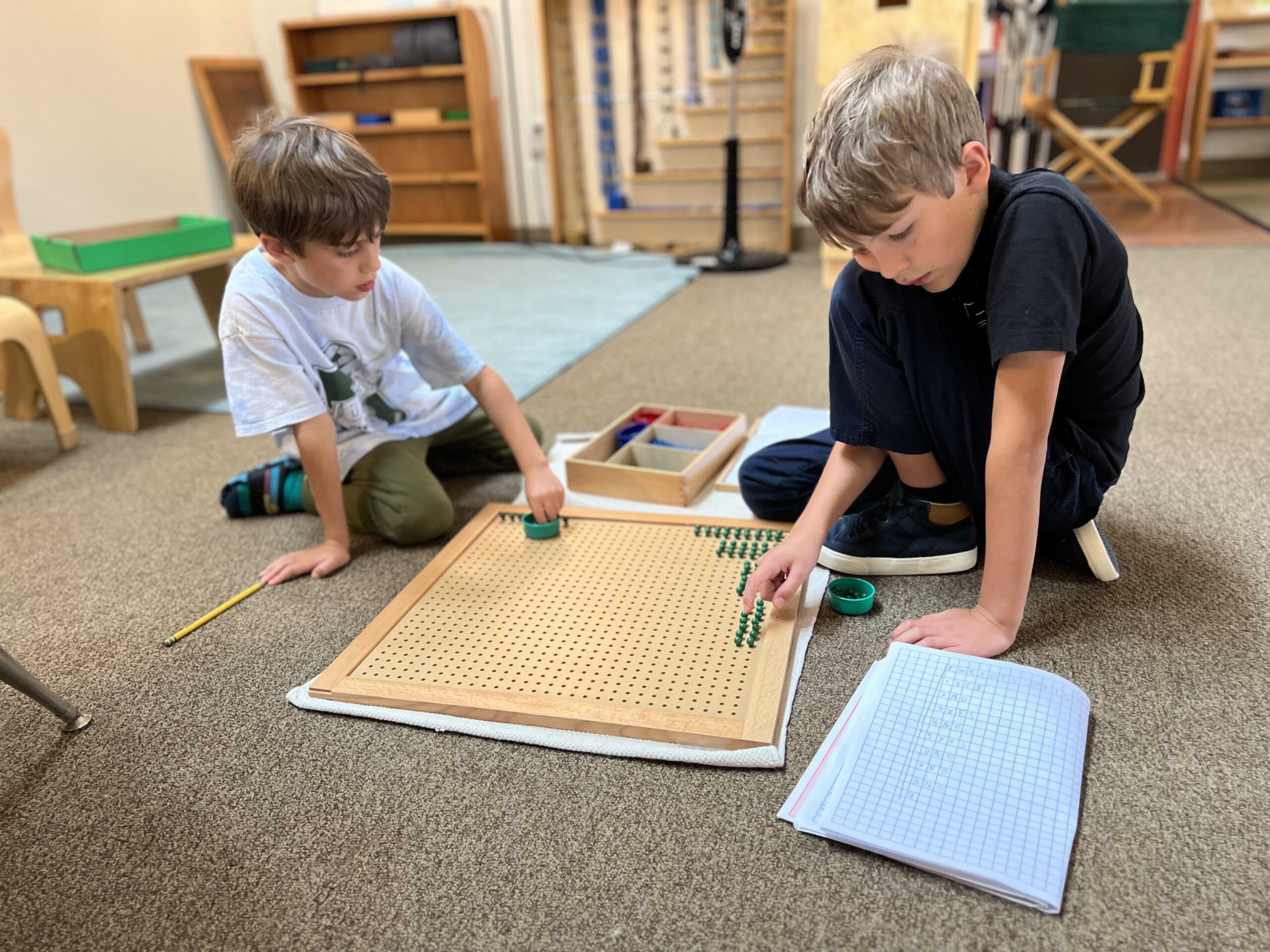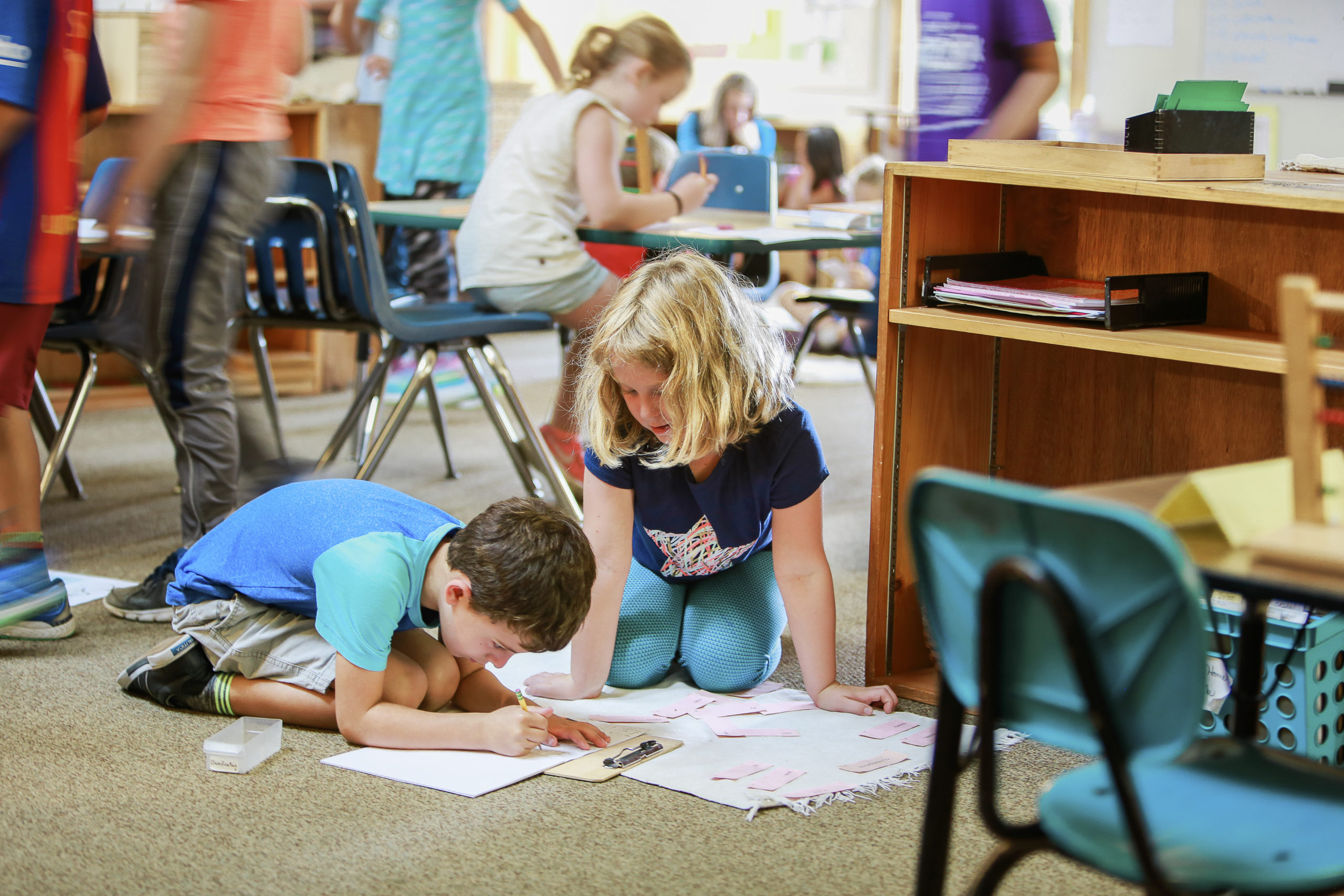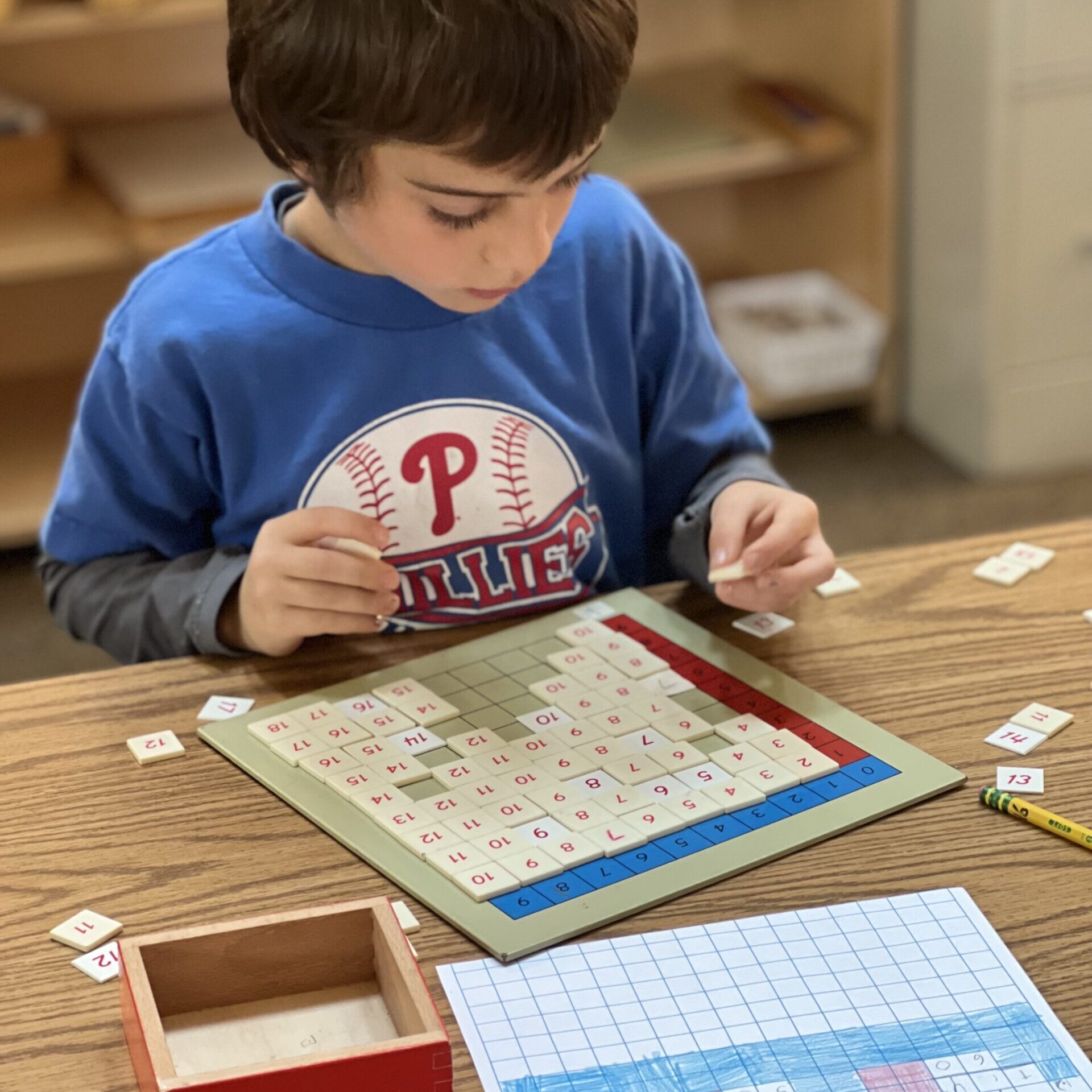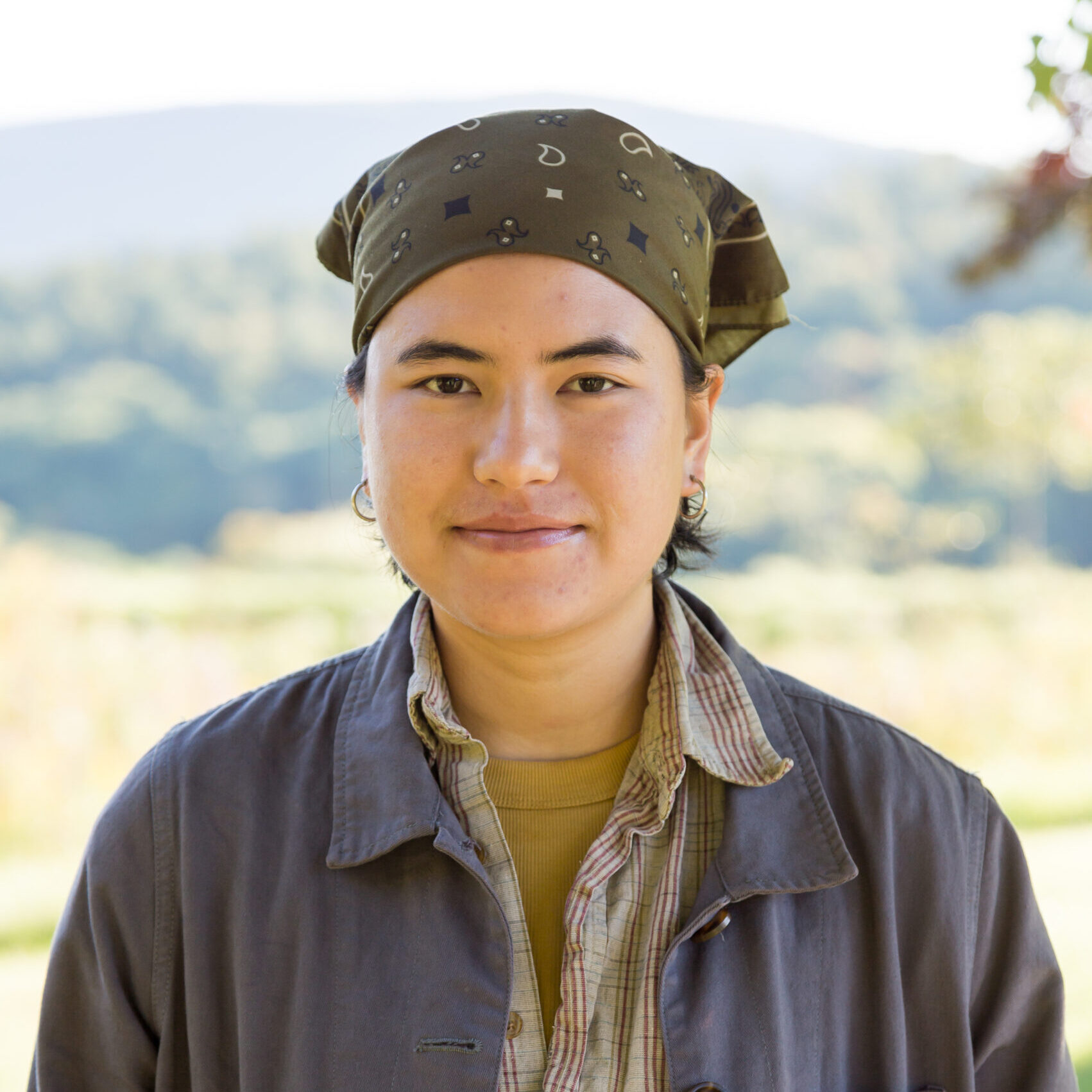Lower Elementary
Ages 6 to 9 // Grades 1 to 3
Lower Elementary (Ages 6 to 9) and Upper Elementary (Ages 9 to 12) are companion environments defined by non-interference in the learning process; they are a continuum designed to accommodate the full range of possibility and potential and wonder of each child throughout this expansive plane of development (the age of fairness and justice and exploration) as well as a freedom of movement during the work cycle; it is a “cosmic age” of looking outward to the universe, backward to the dawn of time, and inward to one’s own role and sense of purpose; therefore, the classrooms provide students prepared and inspiring access to the necessary tools, materials, adults, technology, the outdoors, and one another so as to meet their imagination and thirsts head-on. These too are hands-on spaces that thrive on attention to order and care; most importantly, they are where students come to construct their own learning and, in turn, themselves.
Curriculum
Work and Social - The Peace Curriculum
The academic and social mission of the Lower Elementary is to respond to the six to nine year olds’ changing needs, abilities, and sensitivities at this profoundly new and dynamic stage of development. The presence of age old tendencies to explore, to orient oneself, to order the environment, to imagine, to think in abstract terms, to be exact, to communicate, and to work with the hands all suggest inherent movement towards both social and intellectual independence. Consequently, the boundaries of the Lower Elementary child’s environment are expanded to accommodate the great strides being made toward the ability to reason, both cognitively and morally, as well as the irresistible pull to seek one another’s company and form groups of all kinds. Students develop self-esteem and learn to think for themselves by becoming fully engaged in the process of their own learning: through the nurturing of lasting individual and community-oriented habits of heart and mind.
Mathematics
Mathematics in the Lower Elementary is presented in a scope and sequence prepared to match the developing abilities of the six to nine year old. Initially, the elementary child builds upon the vocabulary of math and the understanding of numeration, counting, size, and shape introduced in the primary classroom. Familiarity with the four basic operations — addition, subtraction, multiplication, and division — is also methodically expanded through the use of a progression of manipulatives. Through extensive practice, the maturing lower elementary student develops the ability to perform arithmetic abstractions independent of the materials. In turn, mathematical learning at this level concerns the acquisition of facts and the facilitation of numbers, but more importantly, the preparation for abstract reasoning and calculation at the Upper Elementary level.
Language Arts
Montessori education uses a holistic approach to reading. The 6 – 9 year old classroom is a language rich environment in which literacy is developed through phonemic awareness, cultural studies, reading groups, and the research process. Reading instruction takes place in small groups or on an independent basis. Strategies for comprehension are emphasized and imparted across the curriculum. Writing development includes direct attention to the writing process as practiced through journaling, research writing, and creative writing in all its forms.
Cultural Curriculum / History, Geography, Life Sciences and Physical Sciences
The Montessori cultural curriculum includes history, geography, life sciences, and the physical sciences. The great expanse of the cultural curriculum, covering everything from the cosmos to the atom, captures the imagination of the child at a time when their imagination is, as Dr. Montessori wrote, “the great power of the age.” The child explores the natural laws governing the physical world, the history of the earth, the incredible diversity of life on earth, and finally how humans have met their fundamental needs throughout history. The cultural curriculum inspires in the child both a feeling of wonder and a feeling of humility as they learn about all that came before them and all the life that surrounds them.
Art
The Elementary art room buzzes with energy! During the morning work cycle, this space supports both Upper and Lower El students’ ever-changing work needs. Pausing in the studio, you could see a scene like this: at one table is a 1:1 Upper El math lesson. Nearby, two students from Upper El build a diorama showing the layers of the earth. A circle of Lower El Youngers taking a handwork break practice knitting and teach a newcomer. Another table is bustling as the Lower El Olders paint covers for their hand-bound science journals. The art teacher offers support to the various groups, but also steps back to let them practice, help each other, and problem-solve.
In the afternoon, the Elementary art studio is focused on Art as a subject. Lower and Upper El each have hour-long afternoon art classes twice a week, giving students time to practice skills and develop chosen projects. The Elementary Art program is based on the Teaching for Artistic Behavior method, or TAB, in which the student is the artist and the classroom their studio. (Visit the TAB website to learn more.)
Art begins with a teacher-led group lesson focused on studio care, technique, art-makers around the world, or the artistic process. After the lesson, students transition to Open Studio. While lessons encourage ongoing growth, Open Studio is where the really deep learning happens! Students independently choose their projects with the support of the art teacher, receiving 1:1 lessons as needed. They are given space to think independently, collaborate, practice what they love, and explore themes to their satisfaction. Many walk into Art describing a detailed project they are excited to begin or continue. The children are curious and engaged in lessons, but they are very eager to get to Open Studio!
In any given week, dozens of small lessons occur during Open Studio to support student interests and needs in real-time, such as armature building, paper maché, attaching with strength, paint blending, knitting, crochet, embroidery, knot-tying, hand-sewing, linocut prints, drawing a cube, shading with charcoal, drawing the face, book-making, needle-threading, setting up a paint-space, watercolor layering, mask-making, cutting with craft knives, saws, and awls, bending with pliers, wood-carving, sweeping, and, of course, cleaning as a team.
By following their own creative instincts, the students are deeply motivated to practice important artistic behaviors: planning a project, problem-solving, adapting an ‘oops’, working with deep concentration, and reflecting thoughtfully on their process. They often inspire each other and waves of projects occur spontaneously, like the recent focus on detailed board games that swept through both Lower and Upper El. They spent weeks designing and building them, and loved playing them even more.
While every year is a bit different, group lessons focus on a specific medium for several weeks, including drawing, painting, sculpture, collage, printmaking, and fiber arts.
In Lower El art, students are taught fine-motor techniques that support an understanding of one’s tools, such as sewing with a needle and cutting sculpture materials with hand tools. They are taught age-appropriate techniques to give them confidence in a variety of media, such as building armature for a sculpture, mixing paint colors, and drawing from a reference.
Lessons in Elementary Art often support the focus of the classrooms. In Lower El, students may build dioramas of an animal in its habitat, learn about Indigenous Quechua weavers during the study of South America, and make paper during a unit on ‘essential needs.’
Music
The music program offers rich experiences informed by concepts and skills that empower students to express themselves through this joyful art form. Using speech, singing, movement activities, and instruments, students explore all of the elements of music: rhythm, tempo, melody, harmony, timbre, form, and expression. Students sing in every class from a repertoire that ranges from old camp favorites, to seasonal or topical songs, to challenging new lyrics and melodies. Students experiment with rhythms and counter-rhythms on percussion instruments. On Orff-based barred instruments, they play melodies, explore simple accompaniments, and begin to understand musical form. The Montessori bells make way for the unique Montessori tone bars, which at this level allow students to explore the sound of different kinds of scales. Students participate in ear training activities that help connect their music-making to concepts in music theory. Moving to music, and listening to leading musicians performing a variety of genres, sparks curiosity and interest, inviting personal connection to a wide repertoire of music.
Fitness
The main goals of the Lower Elementary Fitness class are to have fun in the outdoors, specifically winter, and to be comfortable and fit in any climatic conditions. Auxiliary objectives are to encourage an active lifestyle, foster a growth mindset, preparedness, positivity even in the face of adversity, good sportspersonship, the ability to participate in non preferred activities, teamwork, cooperation, creativity, problem solving, perseverance, resiliency, and the ability to enthusiastically pursue difficult tasks, overcome obstacles and do hard things. The Lower Elementary Fitness class prioritizes attitude, preparedness, and introducing warm-ups as a regular fitness element. Having a good attitude in Fitness class includes: participating in non-preferred activities, accepting both winning and losing with grace, playing well with classmates, following instructions, and accepting any weather conditions. Preparedness entails bringing appropriate footwear and clothing for the conditions, bringing a water bottle, and getting ready quickly and respectfully. Every class begins with warm ups including jumping jacks, burpees, push-ups, leg lifts, wall sits, pull-up practice, and running a lap. Students are encouraged to do the warm ups at their own pace and quantity, knowing that everyone’s best is different, and a persons best can change from day to day. Accommodations and modifications due to injury or unique situations are always options. The students then take turns selecting the activity for the remainder of class and these may include: sledding, snow shelter building, walking in the woods, touch football, wiffle ball, soccer, world cup soccer, capture the flag, obstacle course, kickball, street hockey, kick the can, personhunt, and various tag games. Teamwork, cooperation, sportspersonship, and individual effort are valued over athleticism or skill. With Lower Elementary classes, the main focus is on being active outside.
Lower Elementary Teaching Teams: Classroom Teachers, Specials, & Learning Specialist Team
